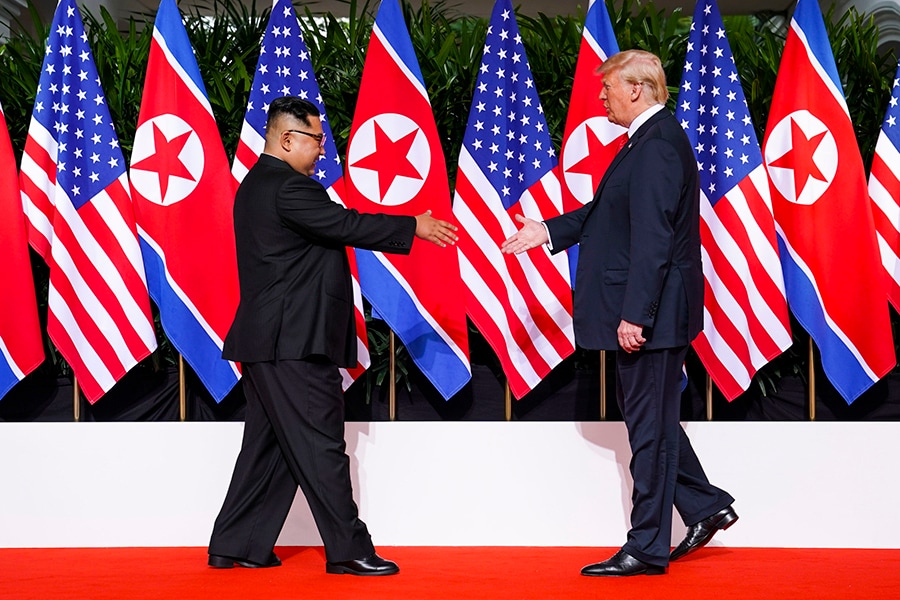
North Korean weapons are likely here to stay, even if Biden won't say it
Estimates are that the North has at least 45 nuclear weapons, and appears headed to an arsenal roughly the size of Pakistan's, another nuclear state the US once demanded must disarm, and now has all but given up that it ever will
 President Donald Trump and Kim Jong-un of North Korea meet for the first time on Sentosa Island in Singapore, June 12, 2018. The two leaders signed a one-page, nonspecific agreement that North Korea has mostly ignored. (Doug Mills/The New York Times)
President Donald Trump and Kim Jong-un of North Korea meet for the first time on Sentosa Island in Singapore, June 12, 2018. The two leaders signed a one-page, nonspecific agreement that North Korea has mostly ignored. (Doug Mills/The New York Times)
Just weeks after President Joe Biden took office, North Korea sent a subtle message to the new administration: It switched on key parts of its nuclear fuel production plant in Yongbyon, the aging complex where the country’s nuclear weapons program was born four decades ago.
North Korean officials knew the heat signatures from their radiochemical laboratory would light up American satellites overhead and make it into the President’s Daily Brief, even if it was not clear whether the move was a deceptive fake or a sustained new round of production.
“It’s part of the playbook,” said Victor Cha, who released an analysis of the images for the Center for Strategic and International Studies. “It says we are here to stay.”
The staying power of Pyongyang’s nuclear arsenal highlights an uncomfortable truth for Biden as he prepares to greet President Moon Jae-in of South Korea at the White House on Friday. Moon has said denuclearization of the Korean Peninsula is a “matter of survival” for his country, and he has called on Biden to revive negotiations.
But North Korea’s arsenal of nuclear weapons and its stockpile of fuel have roughly doubled in the past four years, a steady rise that proceeded even as President Donald Trump held high-drama meetings with Kim Jong Un, the North Korean leader. The best unclassified estimates are that the North has at least 45 nuclear weapons, and appears headed to an arsenal roughly the size of Pakistan’s, another nuclear state the United States once demanded must disarm, and now has all but given up that it ever will. For the North, that has always been a model to follow.
©2019 New York Times News Service




